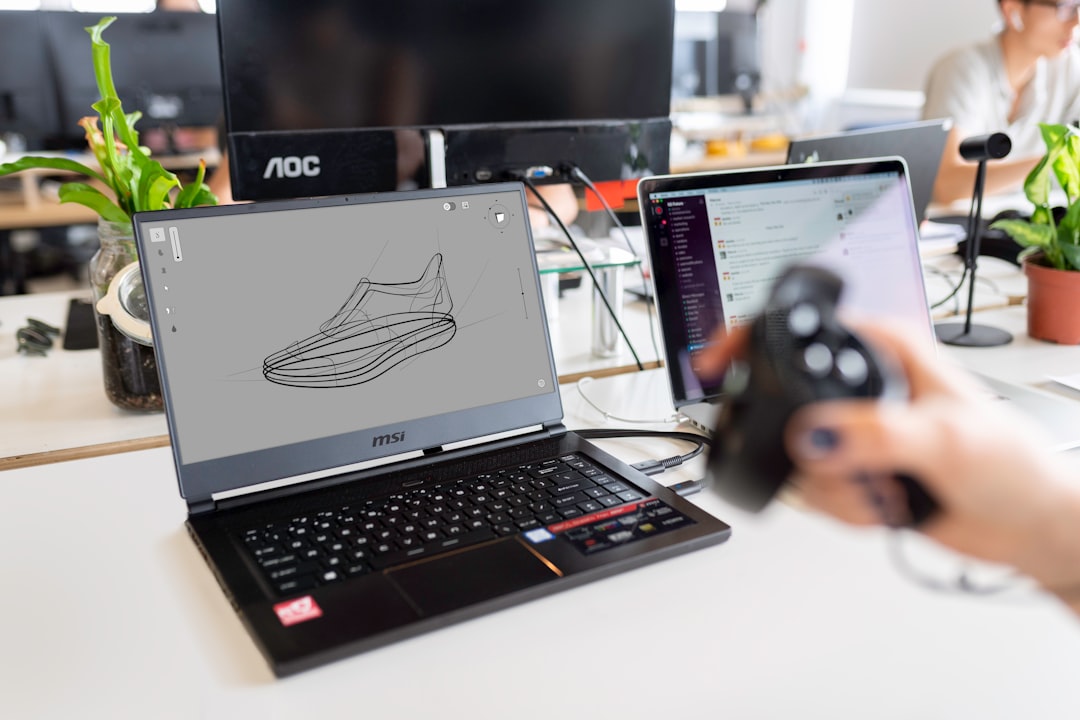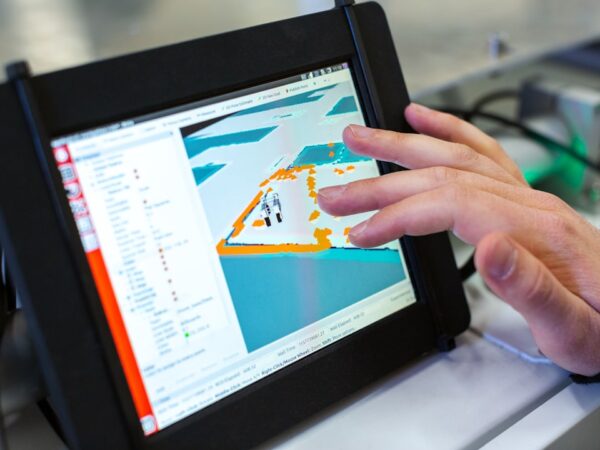
The Ultimate Guide to Sublimation Printing: Top 5 Best Free Sublimation Software for Beginners
Sublimation printing is a popular method of printing that allows for high-quality, long-lasting prints on a variety of materials. It involves the use of special inks that, when heated, turn into a gas and bond with the fibers of the material being printed on. This process creates vibrant, full-color prints that are resistant to fading and cracking.
The sublimation process begins with a design being printed onto special transfer paper using sublimation inks. The design is then placed onto the material to be printed, such as fabric or ceramic, and heat is applied using a heat press. The heat causes the inks to turn into a gas, which then permeates the material and bonds with its fibers. Once the material cools, the ink solidifies and becomes a permanent part of the material.
Sublimation printing can be done on a wide range of materials, including polyester fabrics, ceramic tiles, metal plates, and more. This versatility makes it a popular choice for printing on items such as t-shirts, mugs, phone cases, and promotional products.
Key Takeaways
- Sublimation printing is a process that uses heat to transfer dye onto materials, resulting in vibrant and long-lasting prints.
- Benefits of sublimation printing include high-quality prints, durability, and the ability to print on a variety of materials.
- There are several free sublimation software options available for beginners, including InkScape and GIMP.
- Different types of sublimation software include design software, RIP software, and production software.
- When choosing sublimation software, consider your needs, budget, and level of experience.
Benefits of Sublimation Printing: Why Should You Consider it?
There are several benefits to using sublimation printing for your printing needs.
Firstly, sublimation printing produces high-quality prints with vibrant colors and sharp details. The process allows for full-color printing with no limitations on the number of colors or complexity of the design. This makes it ideal for reproducing photographs or intricate designs with fine details.
Secondly, sublimation prints are long-lasting and resistant to fading and cracking. Unlike other printing methods where the ink sits on top of the material, sublimation ink bonds with the fibers of the material, creating a permanent print that will not peel or fade over time. This makes sublimation prints ideal for items that will be washed or exposed to the elements, such as t-shirts or outdoor signage.
Another benefit of sublimation printing is its versatility. Sublimation inks can be used on a wide range of materials, including fabrics, ceramics, metals, and more. This allows for printing on a variety of products, from clothing and accessories to home decor and promotional items. The ability to print on different materials opens up a world of possibilities for customization and personalization.
Additionally, sublimation printing is cost-effective for small runs. Unlike traditional printing methods that require expensive setup costs and minimum order quantities, sublimation printing allows for printing on demand. This means you can print as few or as many items as you need, without incurring additional costs. This makes it a great option for small businesses or individuals looking to create custom products without breaking the bank.
Lastly, sublimation printing is an eco-friendly option. The process uses water-based inks that are non-toxic and do not produce harmful fumes or waste. Additionally, because the ink bonds with the material instead of sitting on top of it, there is no excess ink or residue left behind. This makes sublimation printing a sustainable choice for those looking to reduce their environmental impact.
Top 5 Best Free Sublimation Software for Beginners: A Comprehensive Overview
When it comes to sublimation printing, having the right software is essential for creating and preparing your designs. Here are five of the best free sublimation software options for beginners:
1. Adobe Photoshop: Adobe Photoshop is a powerful graphic design software that is widely used in the industry. While it is not specifically designed for sublimation printing, it offers a wide range of tools and features that make it suitable for creating and editing designs for sublimation. With Photoshop, you can easily adjust colors, resize images, add text, and more.
Pros:
– Wide range of tools and features
– Industry-standard software
– Extensive online tutorials and resources
Cons:
– Steep learning curve for beginners
– Expensive if you choose to upgrade to the full version
2. GIMP: GIMP (GNU Image Manipulation Program) is a free and open-source image editing software that is often compared to Photoshop. It offers many of the same features and tools, making it a great alternative for those who don’t want to invest in expensive software. GIMP supports a wide range of file formats and allows for advanced editing and manipulation of images.
Pros:
– Free and open-source
– Similar features to Photoshop
– Available for Windows, Mac, and Linux
Cons:
– User interface can be overwhelming for beginners
– Limited support compared to commercial software
3. Inkscape: Inkscape is a free and open-source vector graphics editor that is ideal for creating designs for sublimation printing. It allows you to create and edit vector graphics, which are scalable without losing quality. Inkscape supports a wide range of file formats and offers tools for drawing, editing paths, adding text, and more.
Pros:
– Free and open-source
– Supports vector graphics
– Available for Windows, Mac, and Linux
Cons:
– Steep learning curve for beginners
– Limited support compared to commercial software
4. Canva: Canva is a web-based graphic design platform that offers a range of templates and tools for creating designs. While it is not specifically designed for sublimation printing, it can be used to create designs that can be exported and printed using sublimation software. Canva offers a user-friendly interface and a wide range of design elements, making it a great option for beginners.
Pros:
– User-friendly interface
– Wide range of design elements
– Web-based, no installation required
Cons:
– Limited customization options compared to dedicated design software
– Export options may be limited for sublimation printing
5. CorelDRAW: CorelDRAW is a professional graphic design software that offers a range of tools and features for creating designs for sublimation printing. While it is not free, it offers a free trial period that allows you to test out the software before making a purchase. CorelDRAW supports vector graphics and offers advanced editing and design tools.
Pros:
– Professional-grade software
– Wide range of tools and features
– Free trial period available
Cons:
– Not free
– Steep learning curve for beginners
Understanding the Different Types of Sublimation Software Available
| Software Type | Description |
|---|---|
| Basic Sublimation Software | Entry-level software with limited features and functionality. |
| Advanced Sublimation Software | Software with more features and functionality, including color management and image editing tools. |
| RIP Software | Software that optimizes printing output and color accuracy for high-quality sublimation printing. |
| Web-to-Print Software | Software that allows customers to design and order customized sublimation products online. |
| Production Management Software | Software that streamlines production processes and manages orders, inventory, and shipping. |
When it comes to sublimation software, there are several different types to choose from, each with its own advantages and disadvantages. Here is an overview of the different types of sublimation software available:
1. Desktop Software: Desktop software is installed directly onto your computer and offers a wide range of features and capabilities. This type of software is typically more powerful and customizable than online or mobile apps, but it may require more technical knowledge to use. Desktop software often offers advanced design tools, color management options, and the ability to create and save templates.
2. Online Software: Online sublimation software is accessed through a web browser and does not require any installation. This type of software is often more user-friendly and accessible, making it a great option for beginners or those who don’t want to deal with the technical aspects of desktop software. Online software typically offers basic design tools, templates, and the ability to upload and edit images.
3. Mobile Apps: Mobile apps are designed specifically for use on smartphones or tablets and offer a simplified version of sublimation software. These apps are often more limited in terms of features and capabilities compared to desktop or online software but offer the convenience of being able to design on the go. Mobile apps typically offer basic design tools, templates, and the ability to upload and edit images.
When choosing sublimation software, it’s important to consider your specific needs and preferences. If you require advanced design tools and customization options, desktop software may be the best choice for you. If you prefer a user-friendly interface and the ability to access your designs from anywhere, online software or mobile apps may be more suitable.
How to Choose the Right Sublimation Software for Your Needs
Choosing the right sublimation software for your needs can be a daunting task, especially with so many options available. Here are some considerations to keep in mind when selecting software:
1. Ease of Use: Consider how user-friendly the software is and whether it is suitable for beginners or those with limited technical knowledge. Look for software that offers a simple and intuitive interface, as well as helpful tutorials or documentation.
2. Features: Determine what features are important to you and whether the software offers them. Some key features to look for include design tools, templates, image editing capabilities, color management options, and the ability to create and save templates.
3. Compatibility: Ensure that the software is compatible with your equipment, such as your printer or heat press. Check if the software supports the file formats you typically work with and whether it can handle the size and resolution of your designs.
4. Support: Consider the level of support offered by the software provider. Look for software that offers technical support, either through email, phone, or live chat. Additionally, check if there are online forums or communities where you can connect with other users for advice and troubleshooting.
5. Cost: Determine your budget for sublimation software and consider whether you are willing to pay for premium features or additional support. While there are free options available, they may have limitations or lack certain features compared to paid software.
By considering these factors, you can narrow down your options and choose the sublimation software that best suits your needs and preferences.
Using Sublimation Software: Tips and Tricks for Beginners

Using sublimation software can be intimidating for beginners, but with a little practice and some helpful tips, you’ll be creating stunning designs in no time. Here are some tips and tricks to get you started:
1. Familiarize Yourself with the Software: Take the time to explore the software and familiarize yourself with its features and tools. Watch tutorials or read documentation to learn how to navigate the interface, create designs, and make adjustments.
2. Start with Simple Designs: When starting out, it’s best to begin with simple designs before moving on to more complex ones. This will allow you to get a feel for the software and build your skills gradually. Experiment with different design elements, such as text, shapes, and images, to see how they can be combined to create unique designs.
3. Use Templates: Many sublimation software options offer pre-designed templates that you can customize to suit your needs. Templates are a great starting point for beginners as they provide a structure for your design and can help you understand how different elements work together.
4. Pay Attention to Color Management: Color management is an important aspect of sublimation printing, as it ensures that the colors in your design are accurately reproduced on the final product. Learn how to calibrate your monitor and adjust color settings in the software to achieve consistent and accurate colors.
5. Prepare Artwork Properly: Before printing your design, make sure it is properly prepared for sublimation. This includes ensuring that the image resolution is suitable for printing, converting colors to CMYK if necessary, and adding bleed if required. Follow the guidelines provided by your software or printer manufacturer for best results.
6. Test Prints: It’s always a good idea to do test prints before committing to a large production run. This will allow you to check for any issues or adjustments that need to be made before printing on the final product. Use scrap materials or sample products to test your designs and make any necessary tweaks.
7. Save and Backup Your Designs: Regularly save your designs and create backups to avoid losing your work. This is especially important if you are working on a complex design or have spent a significant amount of time on it. Consider using cloud storage or external hard drives to keep your designs safe.
By following these tips and practicing regularly, you’ll become more comfortable and proficient in using sublimation software.
Step-by-Step Guide to Installing and Setting Up Sublimation Software
Installing and setting up sublimation software will vary depending on the specific software you choose. However, here is a general step-by-step guide to help you get started:
1. Download the Software: Visit the website of the software provider and locate the download link for the software. Click on the link to begin the download process. Depending on your internet connection speed, this may take a few minutes.
2. Install the Software: Once the download is complete, locate the downloaded file on your computer and double-click on it to begin the installation process. Follow the on-screen instructions to install the software onto your computer. This may involve accepting terms and conditions, choosing an installation location, and selecting additional options.
3. Launch the Software: After the installation is complete, locate the software icon on your desktop or in your applications folder and double-click on it to launch the software. Depending on the software, you may be prompted to enter a license key or create an account.
4. Set Up Your Account: If required, follow the prompts to set up an account for the software. This may involve providing your email address, creating a password, and agreeing to terms and conditions. Some software may offer a free trial period or require a subscription.
5. Customize Settings: Once the software is launched, take some time to customize the settings to suit your preferences. This may include adjusting color management options, setting up printer profiles, or configuring file saving locations. Refer to the software’s documentation or online resources for guidance on how to customize settings.
6. Import or Create Designs: With the software set up, you can now import or create your designs. Depending on the software, you may be able to import images from your computer, access pre-designed templates, or create designs from scratch using the software’s tools and features.
7. Prepare Designs for Printing: Before printing your designs, make sure they are properly prepared for sublimation. This may involve adjusting colors, resizing images, adding text, or making other adjustments. Follow the guidelines provided by your software or printer manufacturer for best results.
8. Print Your Designs: Once your designs are ready, connect your printer to your computer and follow the printing instructions provided by the software. Make sure you have the appropriate sublimation paper and ink cartridges installed in your printer.
9. Heat Press Your Prints: After printing, carefully transfer your designs onto the material using a heat press. Follow the instructions provided by your heat press manufacturer for proper temperature and time settings.
10. Inspect and Finish: Once the material has cooled, inspect your prints for any issues or imperfections. Trim any excess paper if necessary and finish the product according to its specific requirements (e.g., washing fabric items or applying a protective coating to ceramic items).
By the end of the day, I was completely exhausted. The non-stop meetings, endless emails, and constant multitasking had taken a toll on my energy levels. I could feel my body craving rest and relaxation. As I walked out of the office, I made a mental note to prioritize self-care and find ways to recharge for the next day. Whether it’s indulging in a bubble bath, going for a long walk in nature, or simply curling up with a good book, I knew that taking time for myself was essential for maintaining my well-being and productivity.
FAQs
What is sublimation software?
Sublimation software is a type of graphic design software that is used to create designs for sublimation printing. It allows users to create and edit images, add text, and manipulate graphics to create custom designs.
What is sublimation printing?
Sublimation printing is a process that involves transferring a design onto a substrate using heat and pressure. The design is printed onto a special transfer paper using sublimation ink, and then the transfer paper is placed onto the substrate and heated to transfer the design.
What are some features of sublimation software?
Some common features of sublimation software include the ability to create and edit images, add text, manipulate graphics, and create custom designs. Some software also includes templates and pre-made designs to help users get started.
What are some examples of free sublimation software?
Some examples of free sublimation software include GIMP, Inkscape, and Canva. These programs offer a range of features and tools for creating custom designs for sublimation printing.
What are the benefits of using free sublimation software?
Using free sublimation software can save users money on expensive graphic design programs. It also allows users to create custom designs for sublimation printing without needing to hire a professional designer.
Are there any limitations to using free sublimation software?
Free sublimation software may have limitations in terms of features and functionality compared to paid software. Additionally, some free software may have a learning curve for users who are not familiar with graphic design programs.


















